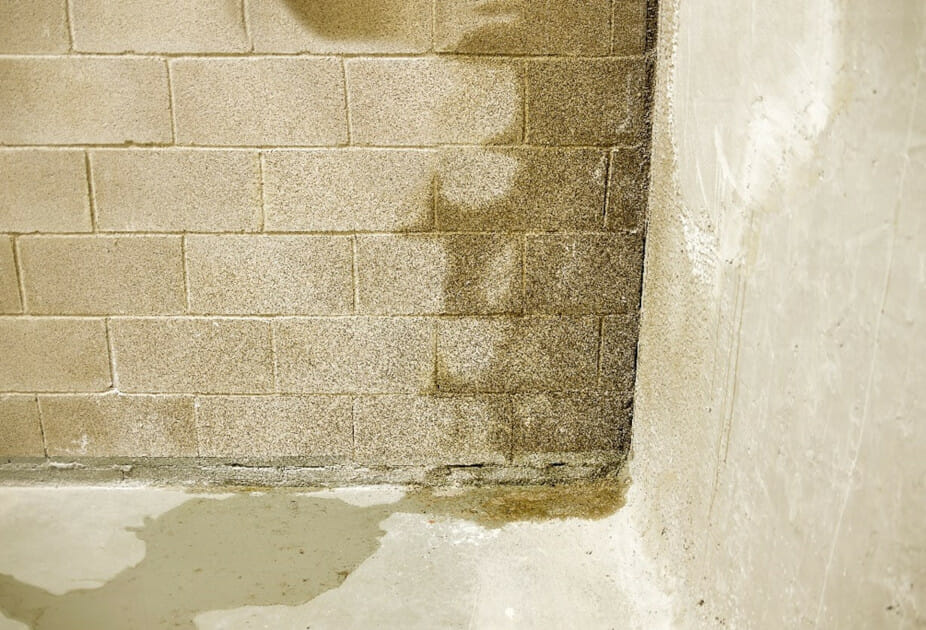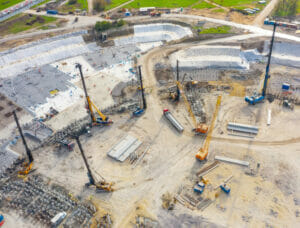Basement construction has become more common, both in new developments and beneath existing buildings, as basements provide an increased floor area for the same footprint of the main, above-ground building. Basements are also often used as an option to overcome planning restrictions. At Hawkins, as more basements are constructed, we have seen an increase in instructions to investigate damage to basements as a result of water ingress.
This article provides both a brief overview of the Regulations, Standards and guidance on the prevention of water ingress during construction of basements. It also demonstrates our investigative approach to establishing the facts, where possible, as to causation and routes for potential subrogated recovery.
REGULATIONS, STANDARDS AND GUIDANCE
Part C2 of the Building Regulations is relevant to the construction of basements and requires that the floors and walls of a building should adequately protect the building from ground moisture. Approved Document C (ADC) provides practical guidance on ways of complying with the requirements of Part C of the Building Regulations. ADC states that the design of floors and walls carried out in accordance with the British Standard “BS 8102:2009 Code of Practice for Protection of Below Ground Structures Against Water From The Ground” (BS 8102) can achieve the requirements of the Building Regulations.
There are three types of protection covered by the code (A, B and C)[1]:
- Type A - protection is provided by a barrier system applied to the structure, either internally, externally or sandwiched between wall skins. Examples include: bonded sheet membranes, liquid applied membranes and cementitious renders.
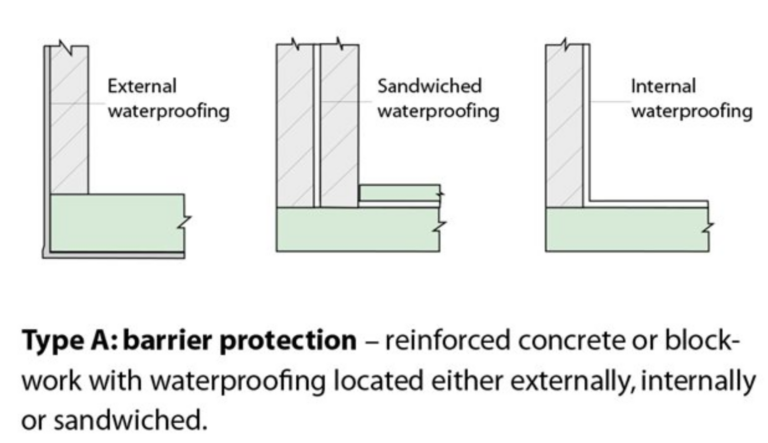
- Type B - protection is provided integrally by the structure itself, such as where waterproofing admixture is added to the structural concrete.
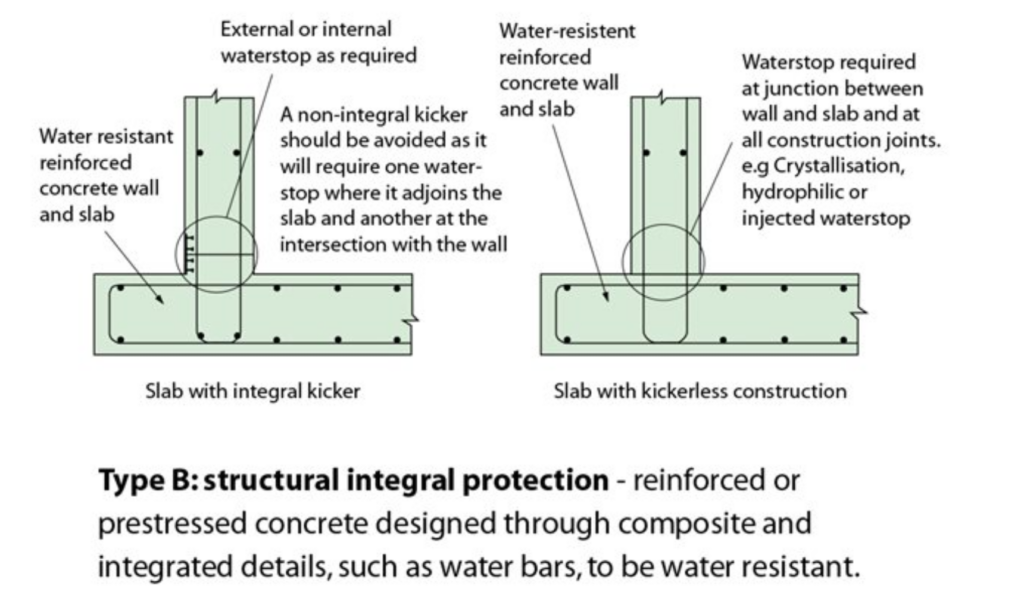
- Type C - protection is provided by the incorporation of an appropriate internal water management system, such as a cavity drain with a perimeter channel leading to a sump with pumps. This is commonly a dimpled (egg shell) sheet placed against the internal face of a structure, designed to intercept water penetrating the structure and direct it into a drainage system.
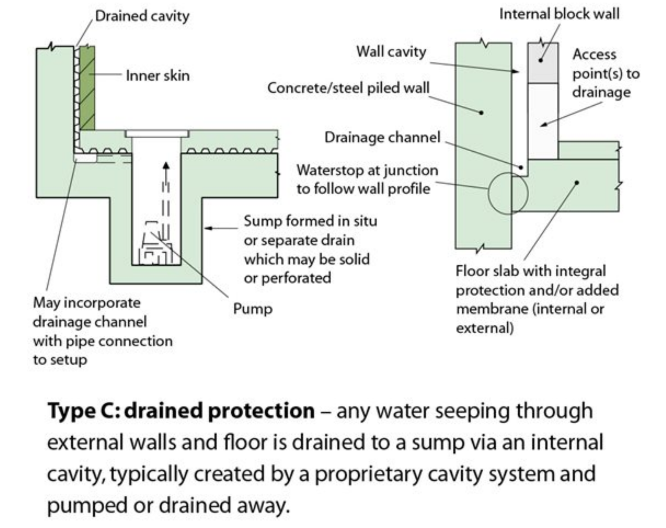
The Code of Practice also describes the grades of waterproofing protection required, which are dictated by the required performance level of the space. The grades are as follows:
- Grade 1 - some seepage and damp areas tolerable. Example structure: an underground car park.
- Grade 2 - no water penetration acceptable, but damp areas tolerable and ventilation may be required. Example structures: storage areas or plant rooms.
- Grade 3 - no water penetration acceptable and ventilation/air conditioning necessary, as appropriate to the intended use. Example structures: ventilated residential and commercial basement areas. The building and people who use the building are required to be protected from the harmful effects of moisture.
Both the level of waterproofing protection and the allowable levels of damp should be determined by the end use of the structure and a risk assessment of water ingress. One of the key considerations in the risk assessment is the risk associated with the water table. If the risk is low, then any of the three types of waterproofing would be acceptable on their own. If the risk is high, then the risk should be reduced. For example, either introducing a second, different type of waterproofing, or installing an external drainage system to locally lower the water pressure can control the amount of water passing through the external basement wall (in the case of a Type C waterproofing system).
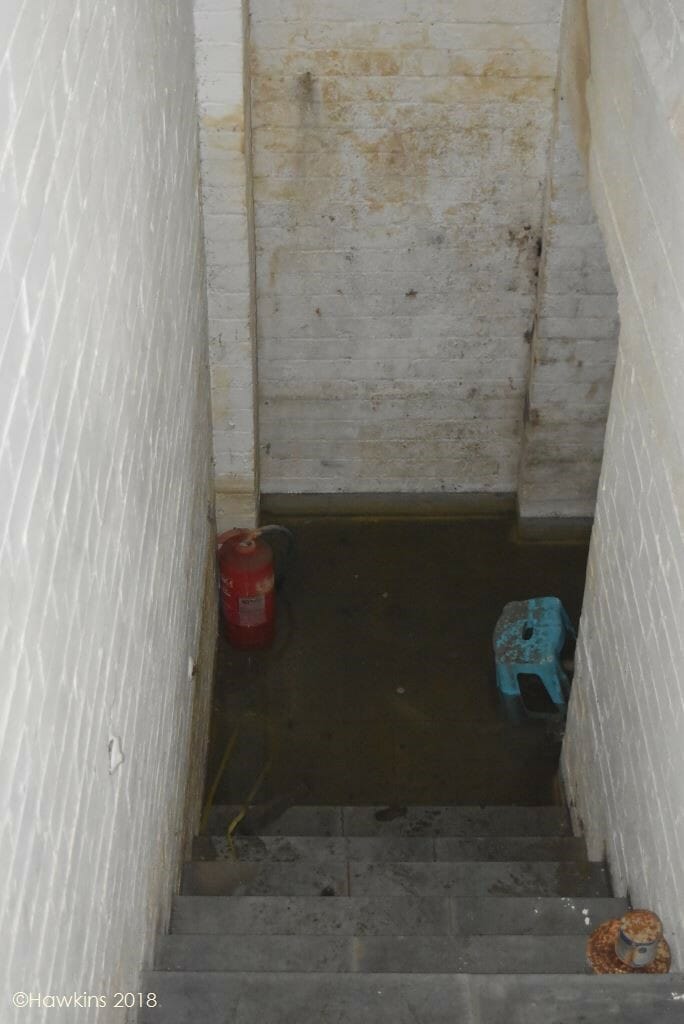
WHAT CAN GO WRONG?
There are many reasons why water ingress to basements can occur including, but not limited to:
Defective design. The specification and detailing of the waterproofing, as well as the accurate assessment of the risks of water ingress, are primary factors in achieving a waterproof basement. The code of practice recommends that the advice of a geotechnical specialist should be sought on both the geology and hydrogeology of the ground, the external drainage options and groundwater conditions of the site. It also recommends that a waterproofing specialist should be included in the building’s design team.
Construction defects. Good workmanship is essential in the construction of basements and installation of waterproofing systems. The continuity of any waterproofing barrier is paramount as any defects or gap in the waterproofing barrier can provide a route for water to penetrate. Where openings are required, such as for pipes and services, the penetrations should be sealed. Waterstops are critical in Type B systems and must be provided at construction joints and penetrations. The materials used in the construction must also be of a suitable standard and deployed in accordance with the manufacturer’s instructions.
Pump failure. Where a cavity drainage system is installed, a failure of the pump(s) in a sump can lead to water backing up and flooding basements. High level water alarms can be installed to reduce the likelihood of this occurring by detecting and notifying the owners (locally or remotely) of high water levels within the sump chamber
High groundwater levels. Groundwater levels should be assessed at the design stage. However, flooding events or local escapes of water can result in groundwater levels reaching much higher levels than accounted for during the design, which may subsequently breach the waterproofing system installed.
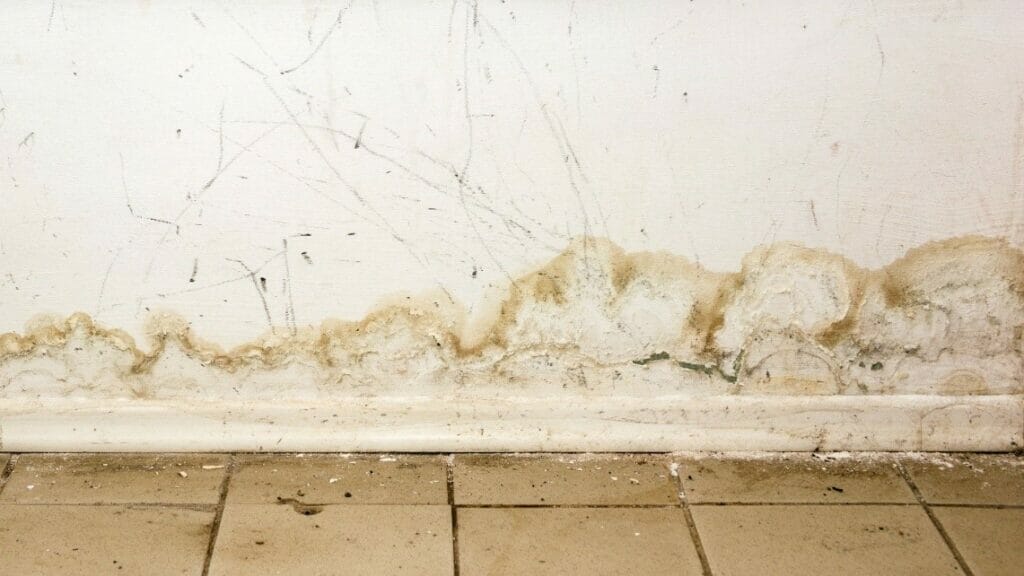
HAWKINS INVESTIGATIONS
Our civil engineering team are experienced in investigating basement waterproofing failures and can aid our clients in establishing both liability and subrogation opportunities. During a site investigation we can carry out visual surveys, moisture surveys and infrared thermography (thermal imaging) to help identify areas of water ingress. Water sampling and analysis (groundwater, mains water, foul water) and dye-tracing are also useful to identify the source of the water. Where available, design and construction documents are reviewed and compared to what was constructed to help identify whether any failures during the design and/or construction phases contributed to the damage.
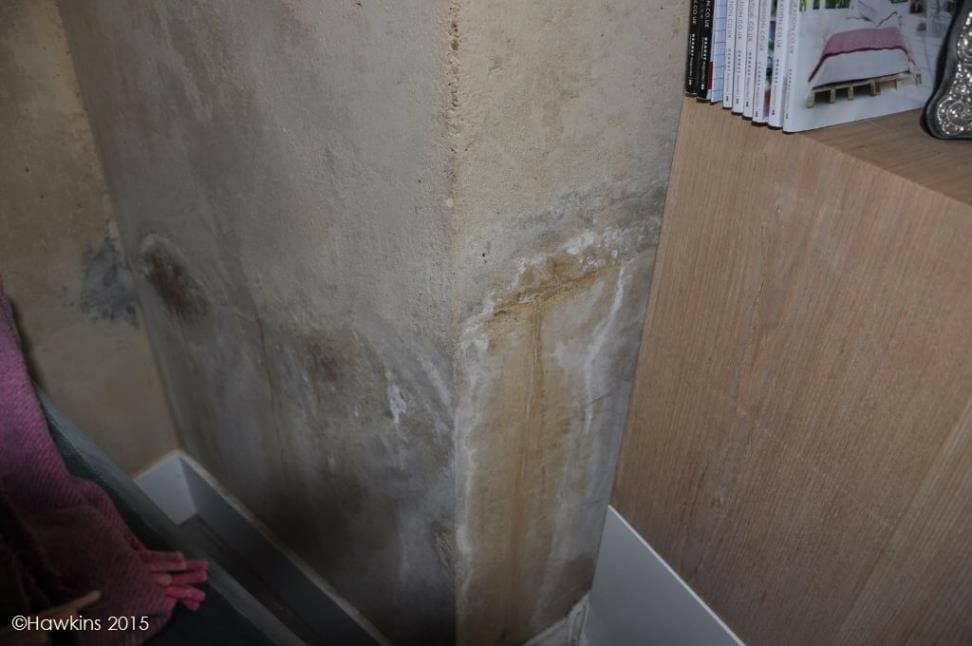
Where heavy rainfall and flooding from waterways is thought to have contributed, Hawkins’ hydrologists can carry out further investigation of the flooding, assessing the contribution of other causative factors and assessing the annual probability (or return period) of a rainfall/flood event.
The second part of this article will focus on the drainage of water from basements, and will be written by Richard Keightley. Please follow us on LinkedIn to see when it is published.
ABOUT THE AUTHOR
Paul Hughes is a Civil Engineer who has a background in the design and construction of marine and offshore structures. With Hawkins, Paul has carried out investigations of ingress of water in facades, roofs and basements, structural failures including buildings, bridges and offshore pipelines, fires and personal injuries.
[1] Original Image Source: https://www.basements.org.uk/TBIC/Waterproofing/Types-of-Waterproofing.aspx
